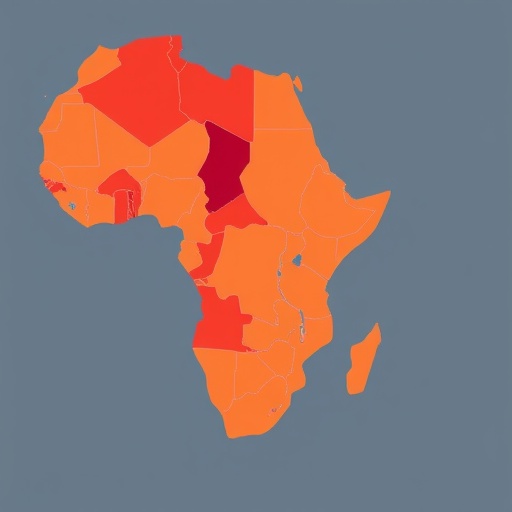In the intricate landscape of maternal health, the influence of environmental factors has increasingly garnered attention, with recent findings pointing to the insidious role of ambient air pollution in precipitating preterm birth (PTB). A novel study spanning over a decade and leveraging an extensive North Carolina birth cohort brings to light nuanced insights into how exposure timing and pollutant intensity conjointly shape the risk landscape for PTB. This research transcends previous analyses that predominantly considered average pollutant exposures across entire pregnancy trimesters, instead exploring refined metrics that capture repeated threshold exceedances during critical windows of fetal vulnerability.
Preterm birth, defined as birth occurring before 37 completed weeks of gestation, remains a substantial public health challenge globally, accounting for significant neonatal morbidity and mortality. While socioeconomic and genetic contributors to PTB are well-documented, mounting evidence implicates environmental pollutants as key modulators of pregnancy outcomes. Among these pollutants, fine particulate matter (PM2.5), nitrogen dioxide (NO2), and ozone (O3) have consistently surfaced as pernicious agents compromising placental function and fetal development. However, pinpointing the temporal dimensions of susceptibility—the so-called “critical windows” during gestation when the fetus is particularly vulnerable to external insults—has proved methodologically complex.
The new investigation, conducted by Mowla et al., utilized data from over 150,000 births recorded between 2003 and 2015, seamlessly integrating air quality monitoring datasets with detailed birth records to align pollutant exposure profiles with gestational timelines. Unlike traditional models relying solely on trimester-averaged concentrations, the researchers introduced a complementary approach focusing on repeated threshold exceedances, capturing more acute, episodic surges in pollutant levels that might provoke pathological responses during sensitive developmental stages. This dual-metric analysis elucidated not only the cumulative burden of pollutant exposure but also the episodic intensity that potentially triggers adverse biological cascades leading to early labor.
The biological plausibility underpinning the association between air pollution and PTB is multifaceted. Fine particulate matter, capable of translocating from maternal lungs into systemic circulation, can induce systemic inflammation, oxidative stress, and endothelial dysfunction, conditions well-known to interfere with placental perfusion and fetal growth homeostasis. Similarly, nitrogen dioxide and ozone contribute to pulmonary inflammation and may augment hypoxic stress within the gestational environment. These pathophysiological perturbations, when occurring during critical windows of placental development and fetal organogenesis, may precipitate mechanisms leading to premature initiation of labor.
Intriguingly, the study underscores that exposure during specific gestational weeks—not merely trimester averages—significantly elevates PTB risk, advocating for heightened surveillance of pollutant peaks rather than broad temporal averages. For instance, repeated exposures exceeding regulatory thresholds during the late first trimester and early second trimester demonstrated stronger correlations with PTB incidence compared to exposures aggregated over entire trimesters. This insight challenges conventional exposure assessment frameworks and signals the need for refined temporal resolution in environmental epidemiology studies concerning pregnancy outcomes.
Moreover, the analytical framework employed robust statistical modeling coupled with spatial-temporal exposure assessments, accounting for residential mobility and localized pollutant variability. This comprehensive approach mitigates common biases related to exposure misclassification, enhancing the credibility and applicability of findings across diverse populations residing in varied microenvironments. The implications extend beyond academic circles, informing public health policy aimed at safeguarding vulnerable populations from episodic pollutant surges.
From a policy perspective, the research propels a compelling case for revisiting air quality standards and regulatory frameworks by emphasizing the health risks posed not only by chronic pollutant exposures but also by repeated short-term elevations surpassing safety thresholds. Current regulations predominantly focus on annual or quarterly average pollutant levels, potentially overlooking brief yet biologically impactful exposure peaks. Tailoring interventions to curb these episodic exposures could yield substantial benefits in reducing PTB rates and improving neonatal health outcomes.
The findings also stimulate discourse on integrating environmental exposure data into prenatal care protocols. Real-time air quality monitoring and personalized exposure risk assessments could empower healthcare providers to offer targeted advice to expectant mothers, especially those in high-risk urban or industrial areas. This proactive strategy aligns with precision medicine paradigms, accounting for environmental determinants as integral components of maternal-fetal health risk profiles.
In addition to informing clinical and regulatory arenas, this study contributes to the mechanistic understanding of how air pollution exerts deleterious effects across the placental-fetal interface. Emerging experimental data suggest that pollutant-induced oxidative stress disrupts trophoblast invasion and vascular remodeling essential for placental function. By correlating temporal exposure patterns with PTB outcomes, epidemiological evidence converges with molecular insights, reinforcing a causal inference framework.
However, the complexity of PTB etiology warrants cautious interpretation. Air pollution operates within a milieu of interacting risk factors, including socioeconomic status, maternal health behaviors, and genetic predispositions. While Mowla et al.’s large cohort design and sophisticated exposure metrics strengthen causality assessments, residual confounding remains a challenge. Future research integrating multi-omics approaches and granular environmental data holds promise for unraveling these intricate interactions.
The study’s North Carolina setting offers a valuable geographical and temporal lens, capturing heterogeneous pollutant profiles characteristic of the southeastern United States. Nonetheless, extrapolating findings globally necessitates consideration of variant pollution sources, climate conditions, and healthcare infrastructures. Replication in diverse cohorts and regions will refine risk estimates and tailor mitigation strategies responsive to local contexts.
In summary, the investigation by Mowla and colleagues elevates our understanding of the temporal dynamics of air pollution exposure in relation to preterm birth, highlighting the potent influence of repeated threshold exceedances during critical gestational windows. By refining exposure assessment paradigms, the research challenges existing norms and illuminates pathways for improved maternal-fetal health interventions. The public health implications resonate deeply, reinforcing the imperative to address environmental determinants as key levers in combating preterm birth epidemics.
As we strive toward healthier pregnancies and neonatal outcomes, integrating environmental surveillance, precision exposure metrics, and targeted public health strategies emerges as a compelling pathway forward. This work not only enriches the scientific discourse but also galvanizes action to mitigate one of the most pervasive and modifiable risk factors threatening the earliest stages of human life.
——
Subject of Research: Ambient air pollutant exposures during pregnancy and their relationship with preterm birth.
Article Title: Air pollution and preterm birth: comparing trimester average and repeated threshold exposure metrics in a North Carolina birth cohort, 2003–2015.
Article References:
Mowla, S.J., Krajewski, A.K., Wilkie, A.A. et al. Air pollution and preterm birth: comparing trimester average and repeated threshold exposure metrics in a North Carolina birth cohort, 2003–2015. J Expo Sci Environ Epidemiol (2025). https://doi.org/10.1038/s41370-025-00774-2
Image Credits: AI Generated
DOI: https://doi.org/10.1038/s41370-025-00774-2
Tags: air pollution and preterm birthcritical windows of fetal vulnerabilityenvironmental factors in maternal healthfine particulate matter and PTBimpact of air pollution on pregnancymaternal exposure to pollutantsneonatal morbidity and mortalitynitrogen dioxide effects on fetal developmentNorth Carolina birth cohort studyozone exposure during pregnancypollutants and placental functionpreterm birth risk factors






